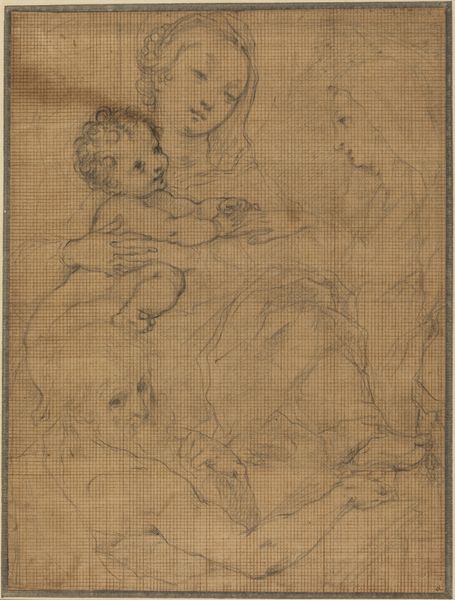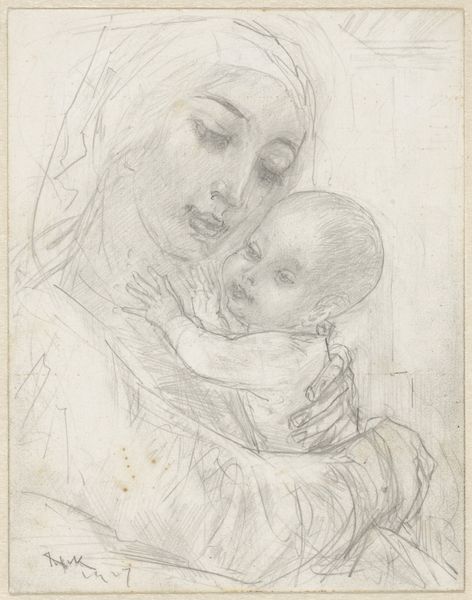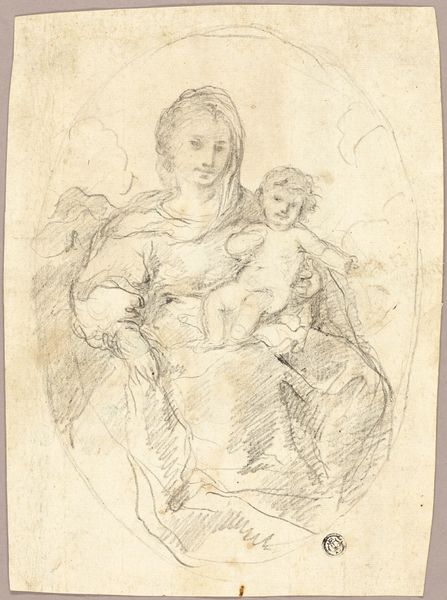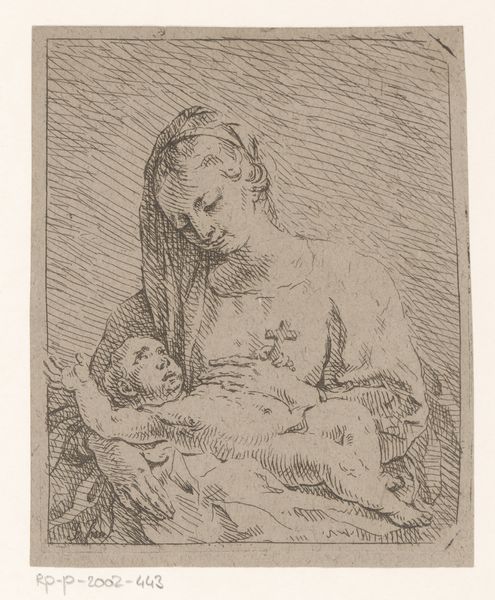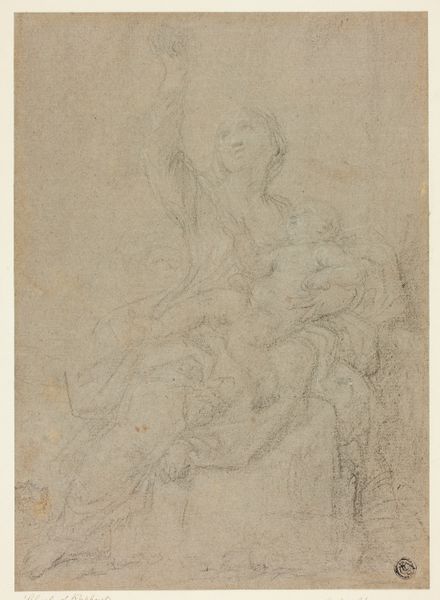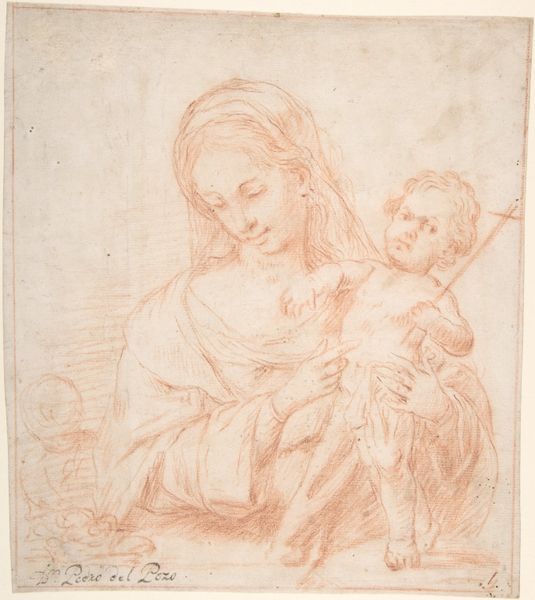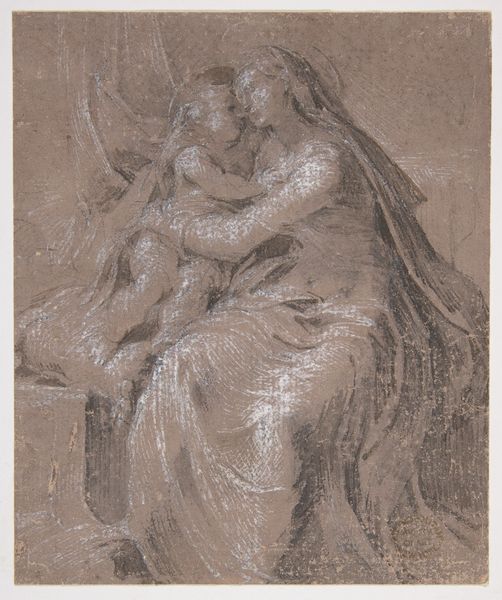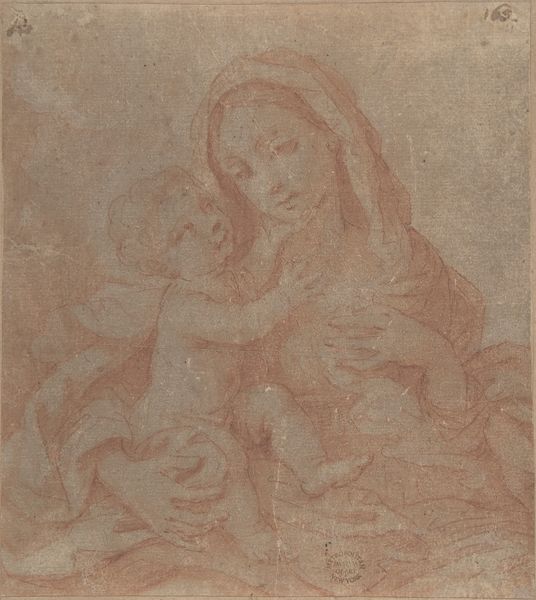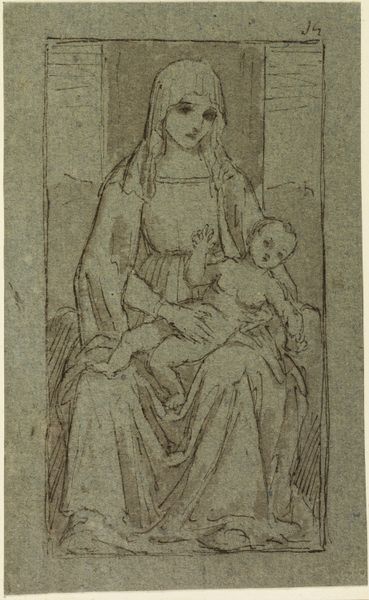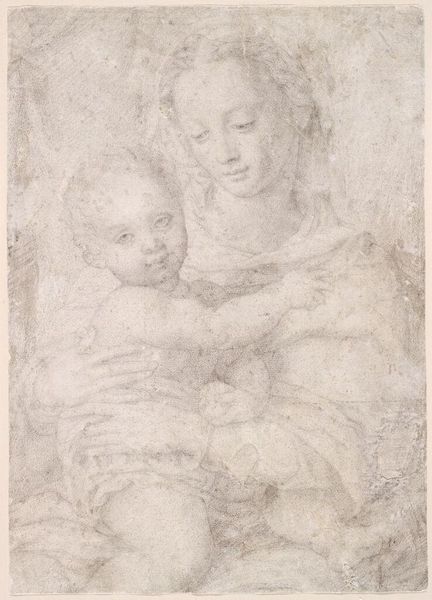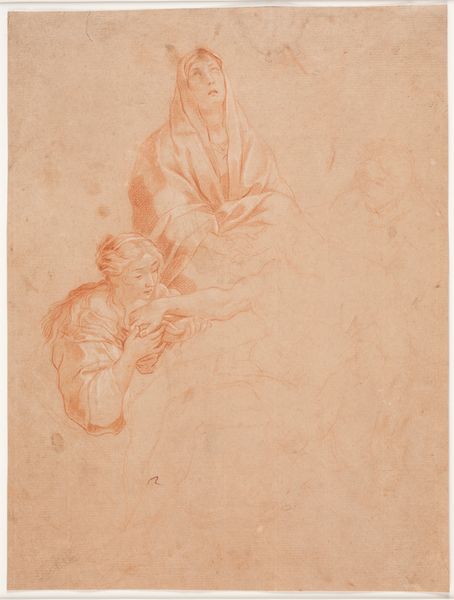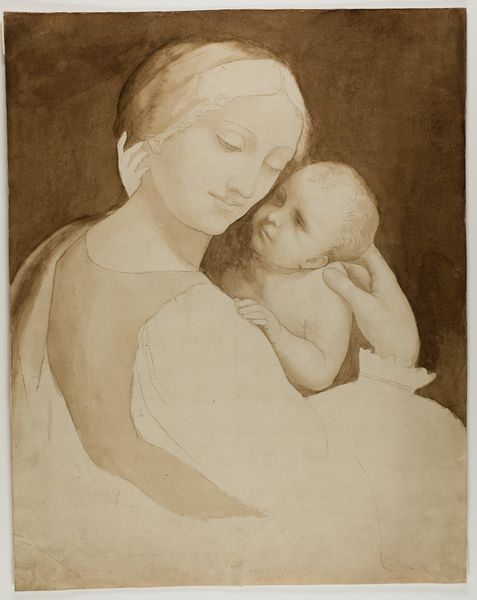
Maria med Jesus-barnet, siddende foran et draperi. I baggrunden i en døråbning en mand 1500 - 1825
0:00
0:00
drawing, pencil
#
portrait
#
drawing
#
pencil sketch
#
figuration
#
11_renaissance
#
pencil
#
history-painting
#
italian-renaissance
Dimensions: 189 mm (height) x 131 mm (width) (bladmaal)
Curator: This drawing, attributed to an anonymous artist active sometime between 1500 and 1825, is titled "Maria med Jesus-barnet, siddende foran et draperi. I baggrunden i en døråbning en mand," which translates to "Mary with the Child Jesus, sitting in front of a drapery. In the background, in a doorway, a man." Editor: It’s intriguing, isn’t it? Such fragile lines, the subtle shading, the sense of quiet intimacy. It’s almost haunting despite its simplicity. Curator: Indeed. Consider how this image reflects the idealized portrayal of motherhood prevalent during the Renaissance and the subsequent centuries, linking earthly existence to the divine, reflecting not just spiritual authority, but also shaping cultural notions about women and their public role. Editor: It's fascinating to think about the artist's process here. The materiality of the pencil on paper – it speaks volumes. You can almost see the hand at work, the pressure applied and released, creating these forms with such minimal means. Was this intended as a study, perhaps? Curator: Likely, yes. Drawings like these provided artists with the opportunity to explore composition and form before committing to larger, more complex works like paintings or frescoes. This was very common within the master-apprentice atelier setting. Editor: It raises interesting questions about the perceived value of such works. Today, we display this pencil sketch. How was its consumption envisioned back then, within the broader production cycles, say, of the Italian Renaissance and other European artistic traditions? Curator: Excellent point. These drawings sometimes held more personal, practical significance. They are a tool. Some served as models within workshops. Others remained private studies or became collectibles among connoisseurs. Their worth depended on a complex interaction of artistic skill, perceived use, and later, market forces. The male figure barely sketched into the background indicates the artist's early-stage ideas on context, social narrative. Editor: Exactly. You’ve drawn my eye to it now, which is so minimal in terms of rendering and raises questions about what’s not fully defined in terms of that space’s occupation. So much labor implied in this art-making that also served a devotional purpose. I'll consider that the next time I sharpen a pencil! Curator: It's an intriguing testament to the power of understated, yet profound artistic vision rooted in its social setting and artistic intent. Editor: Yes, this peek into a creative process lets us appreciate the blend of skilled craftsmanship and devotional iconography so prized and cultivated in European society.
Comments
No comments
Be the first to comment and join the conversation on the ultimate creative platform.

